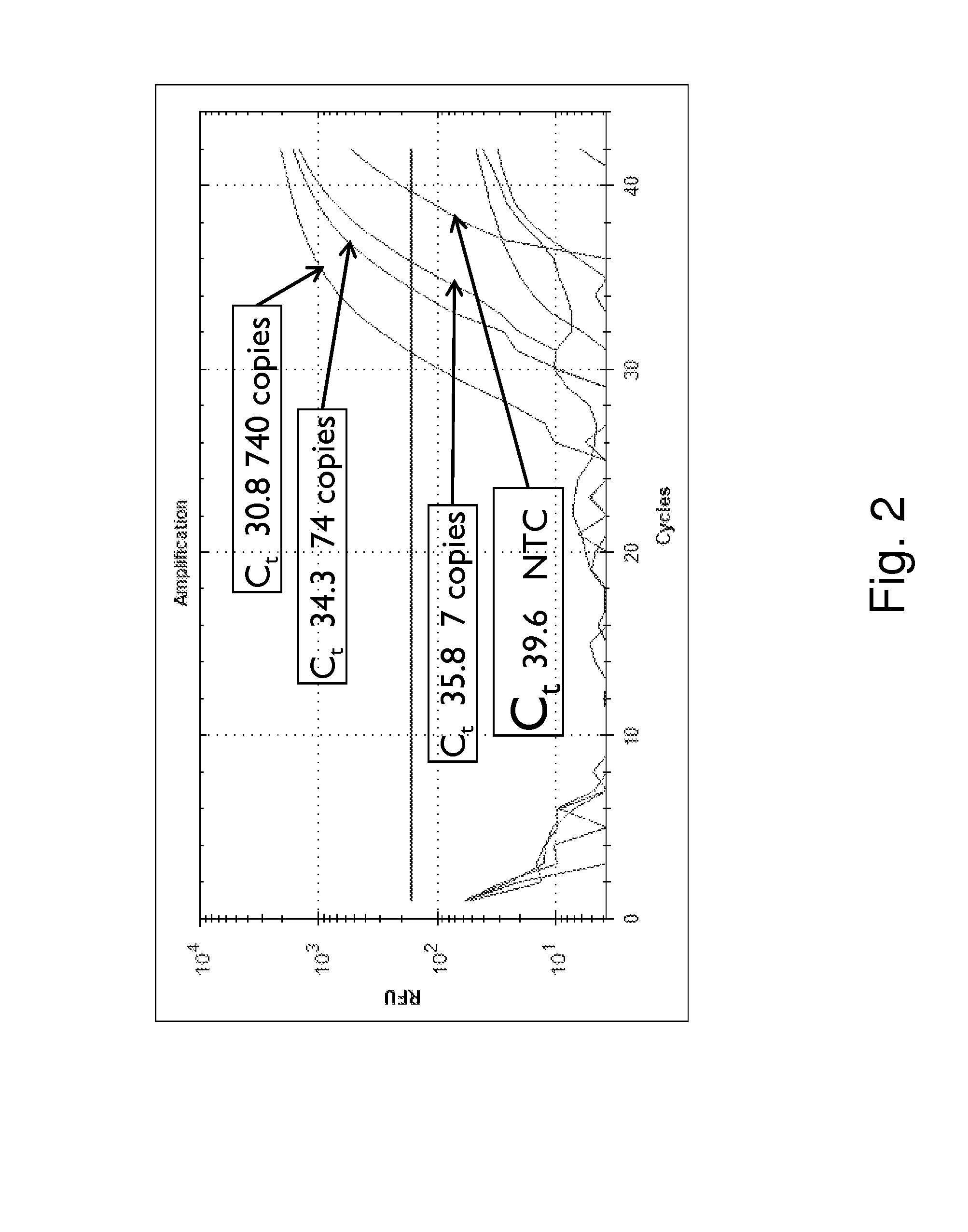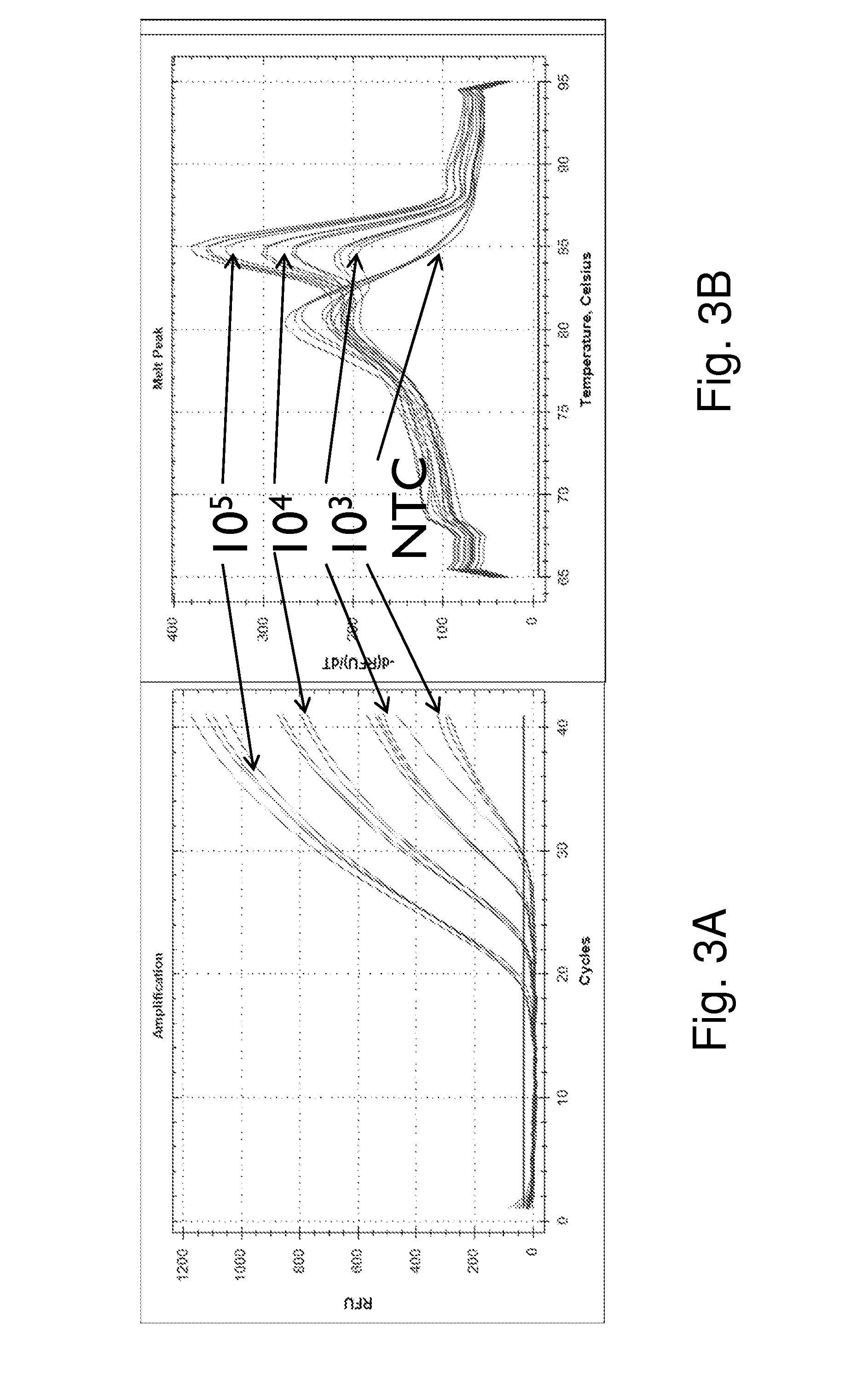Methods and Compositions for PCR Using Blocked and Universal Primers
a technology of universal primers and compositions, applied in the field of methods and compositions for universal primers, can solve the problems of difficult to perform highly multiplexed reactions in a closed tube, and achieve the effects of improving the sensitivity of closely spaced mutation detection, extending both genetic and somatic mutation testing, and improving the sensitivity of detection
- Summary
- Abstract
- Description
- Claims
- Application Information
AI Technical Summary
Benefits of technology
Problems solved by technology
Method used
Image
Examples
example
[0051]The inventors have used a closed tube qPCR to detect Enterococcus gDNA from water samples. In the case of Enterococcus a 16S DNA-specific assay at 5 nM was used. FIG. 2 shows amplification curves for 700, 70 and 7 copies of Enterococcus and NTCs. Each qPCR reaction contained four primers: two target-specific primers for 16S gDNA with 5′ tails and two universal UniTaq primers as shown in FIG. 1c. The delta Ct between 10× dilutions is close to 3.3, the expected optimal theoretical amplification efficiency. The non template control (NTC) reaction is also shown.
[0052]FIG. 3 shows a 1-step closed tube reaction where the sample consisted of 103, 104 and 105 copies of an artificial template representing the ELM4-ALK fusion gene using rhPCR. Seven EML4 fusion specific rhPCR primers and exon 20 ALK rhPCR primers @ 5 nM (all primers had a single RNA base and 3′-C3 block) were multiplexed with universal FAM labeled and regular primers @300 nM (FIG. 4c). Amplification curves (a) and melt ...
PUM
| Property | Measurement | Unit |
|---|---|---|
| temperature | aaaaa | aaaaa |
| holding temperature | aaaaa | aaaaa |
| holding temperature | aaaaa | aaaaa |
Abstract
Description
Claims
Application Information
 Login to View More
Login to View More - R&D
- Intellectual Property
- Life Sciences
- Materials
- Tech Scout
- Unparalleled Data Quality
- Higher Quality Content
- 60% Fewer Hallucinations
Browse by: Latest US Patents, China's latest patents, Technical Efficacy Thesaurus, Application Domain, Technology Topic, Popular Technical Reports.
© 2025 PatSnap. All rights reserved.Legal|Privacy policy|Modern Slavery Act Transparency Statement|Sitemap|About US| Contact US: help@patsnap.com



